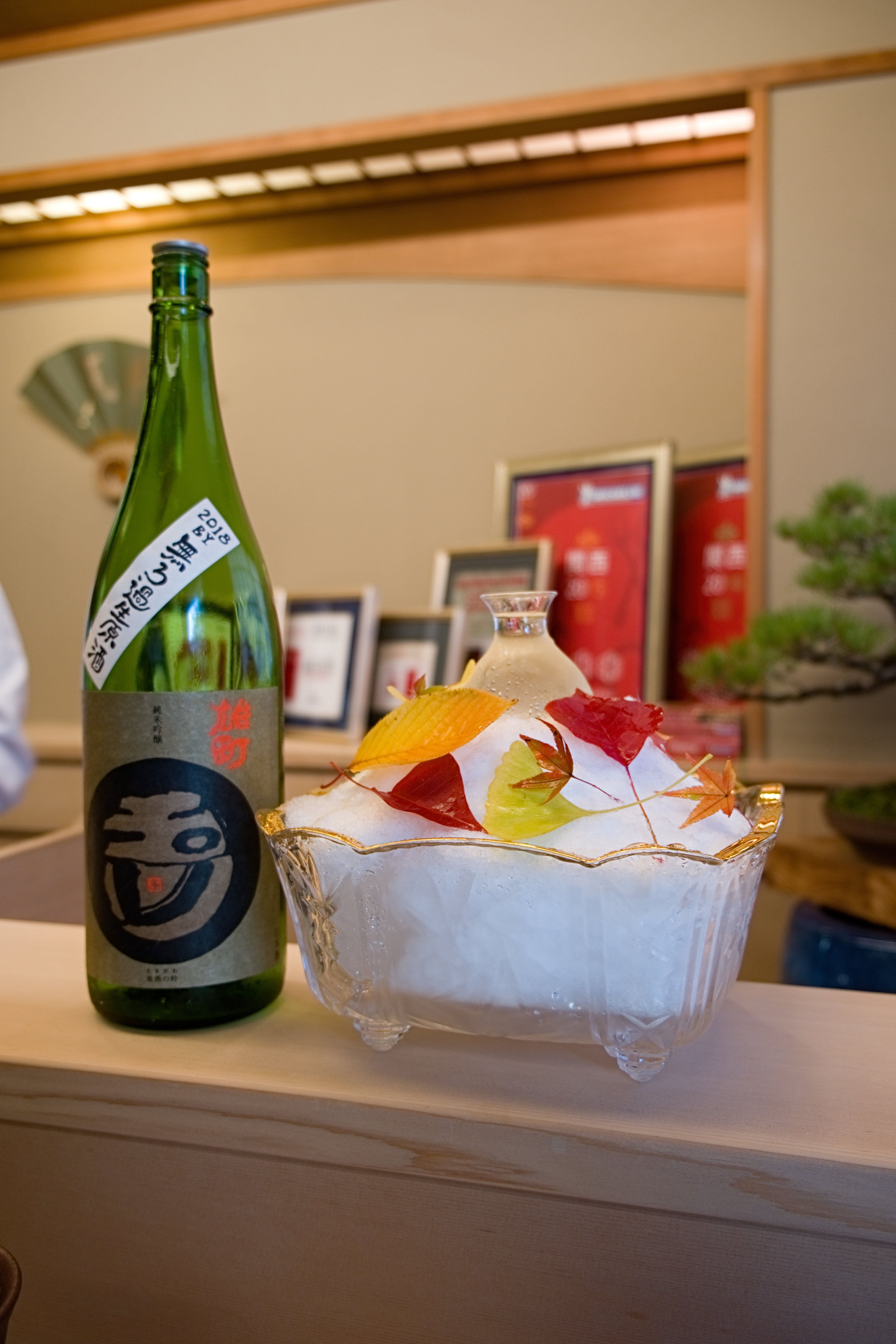

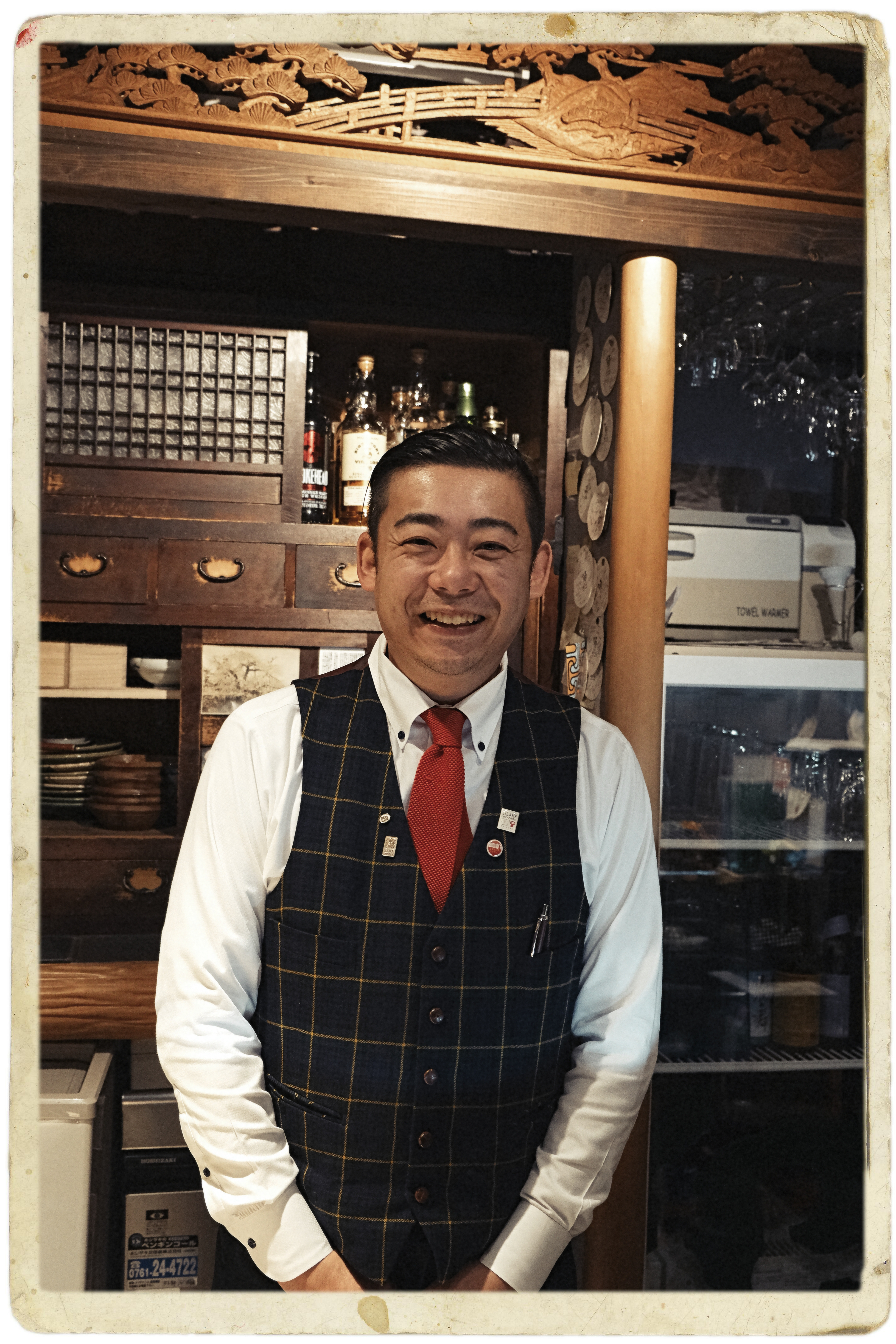
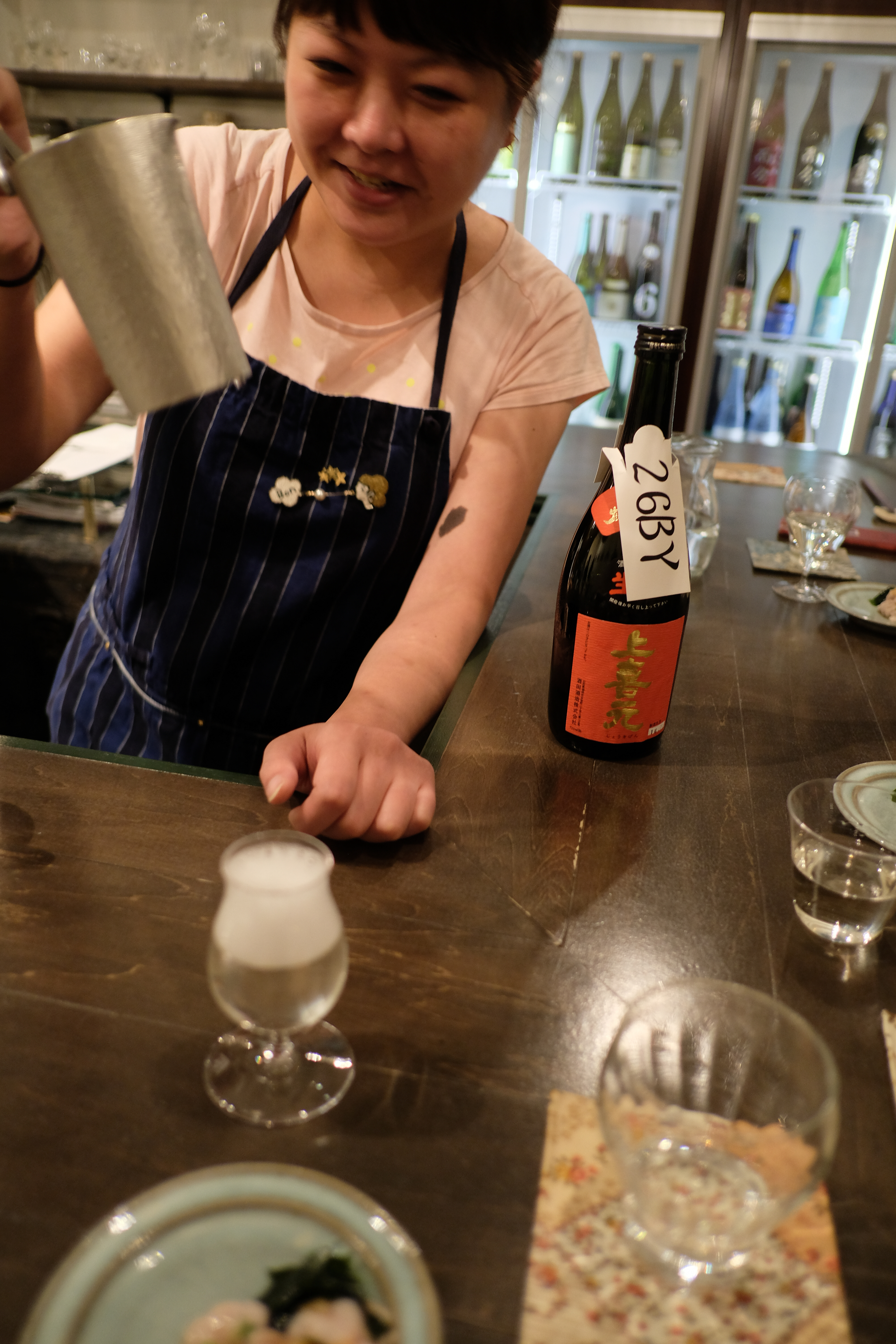



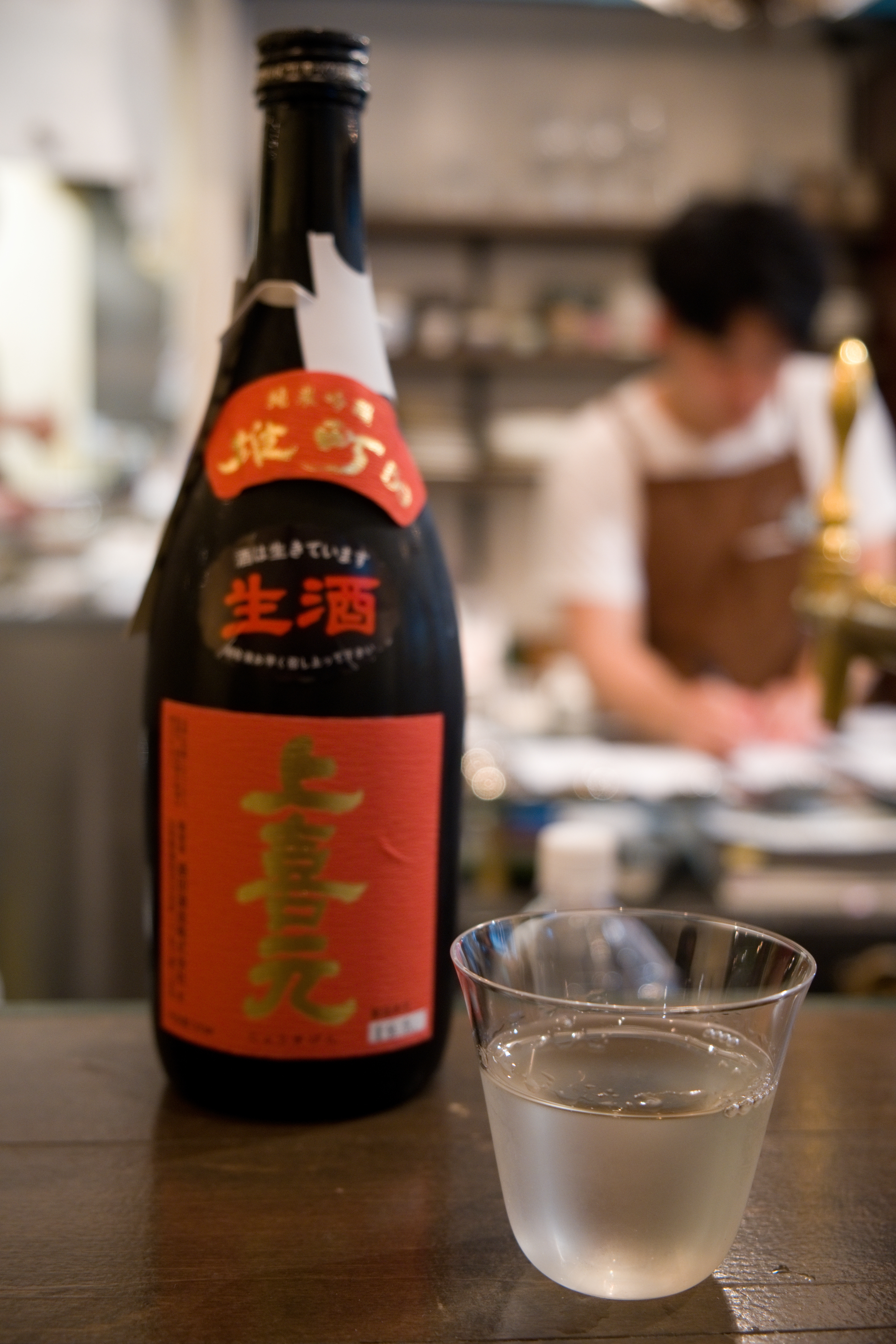
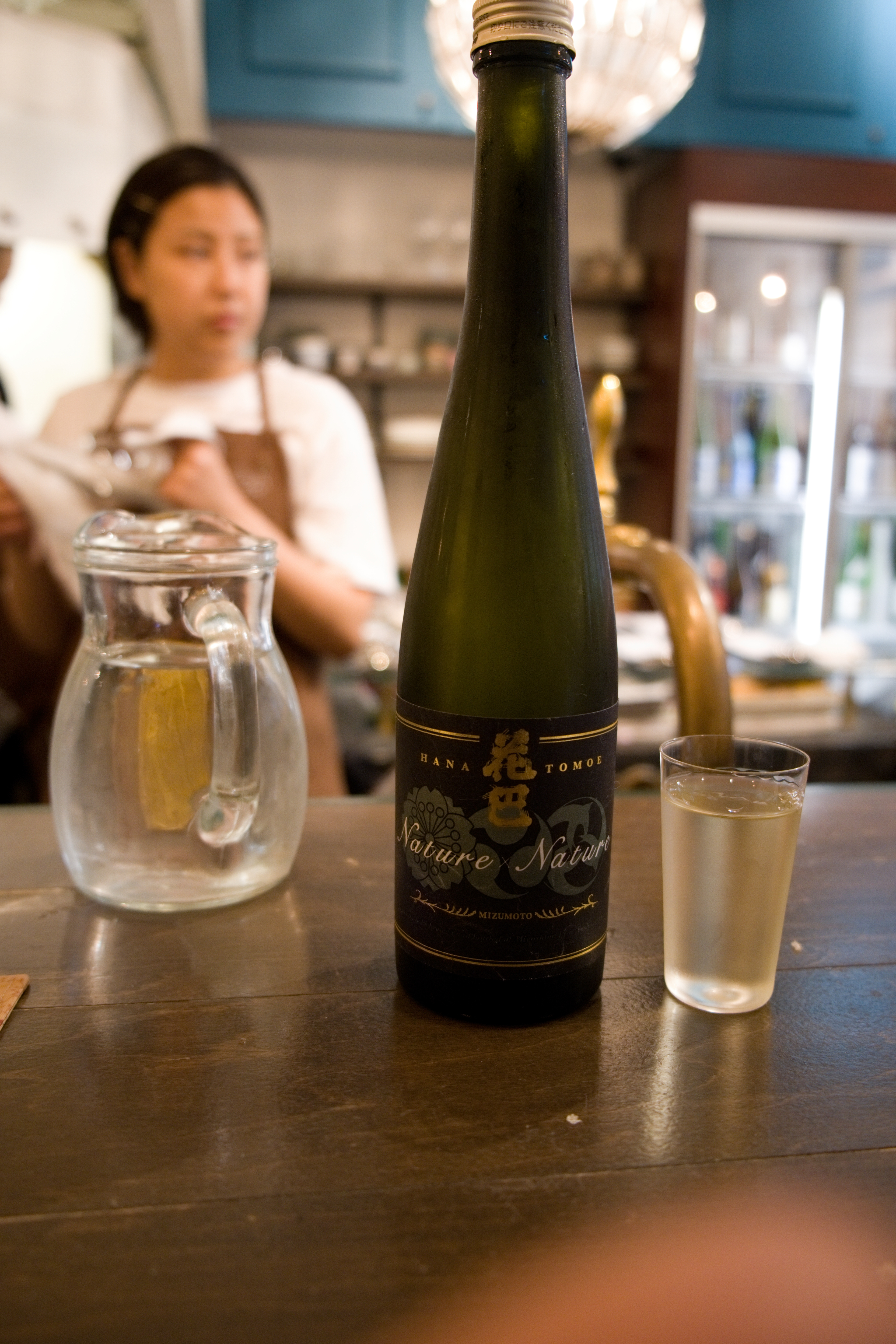

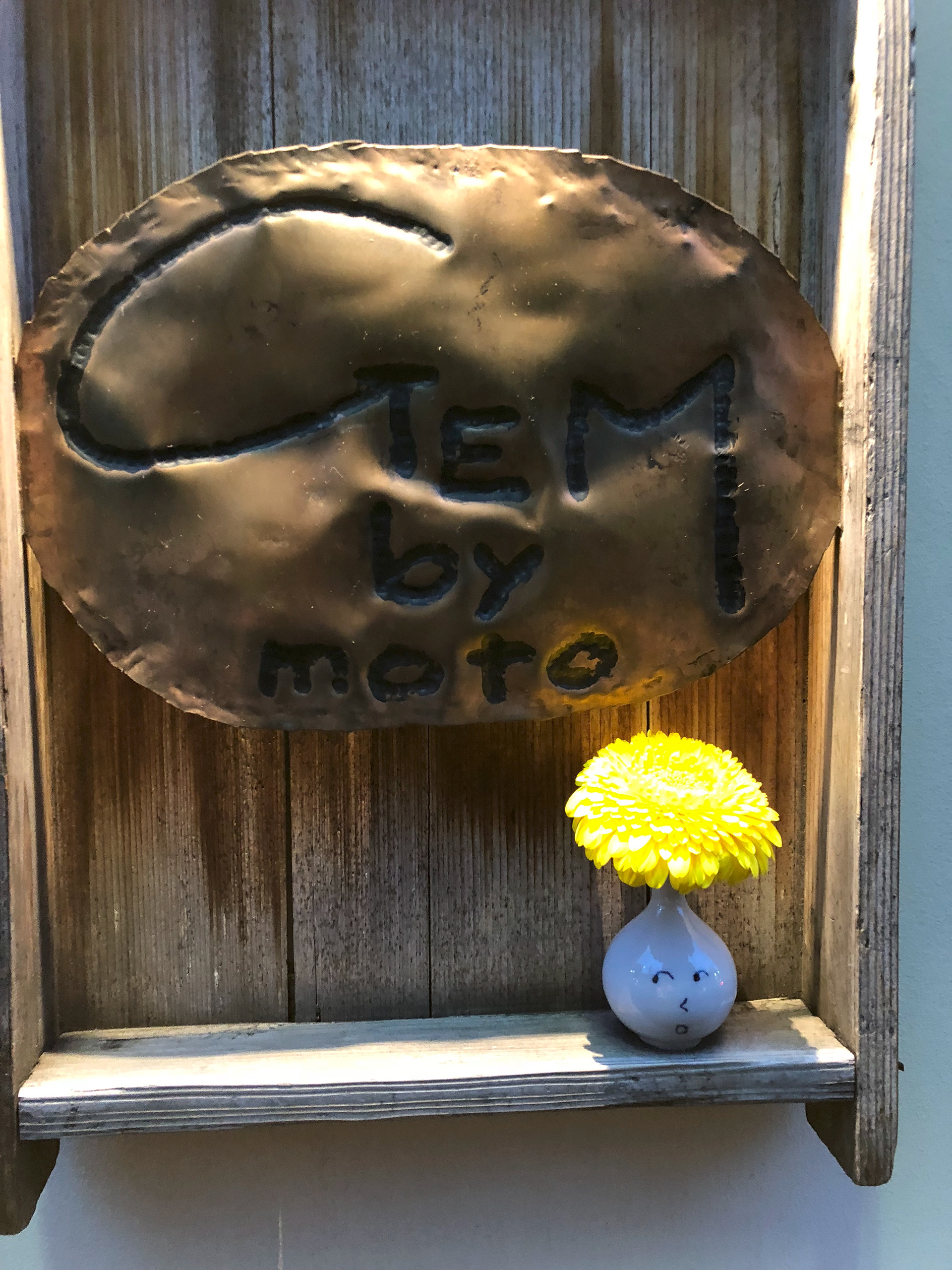



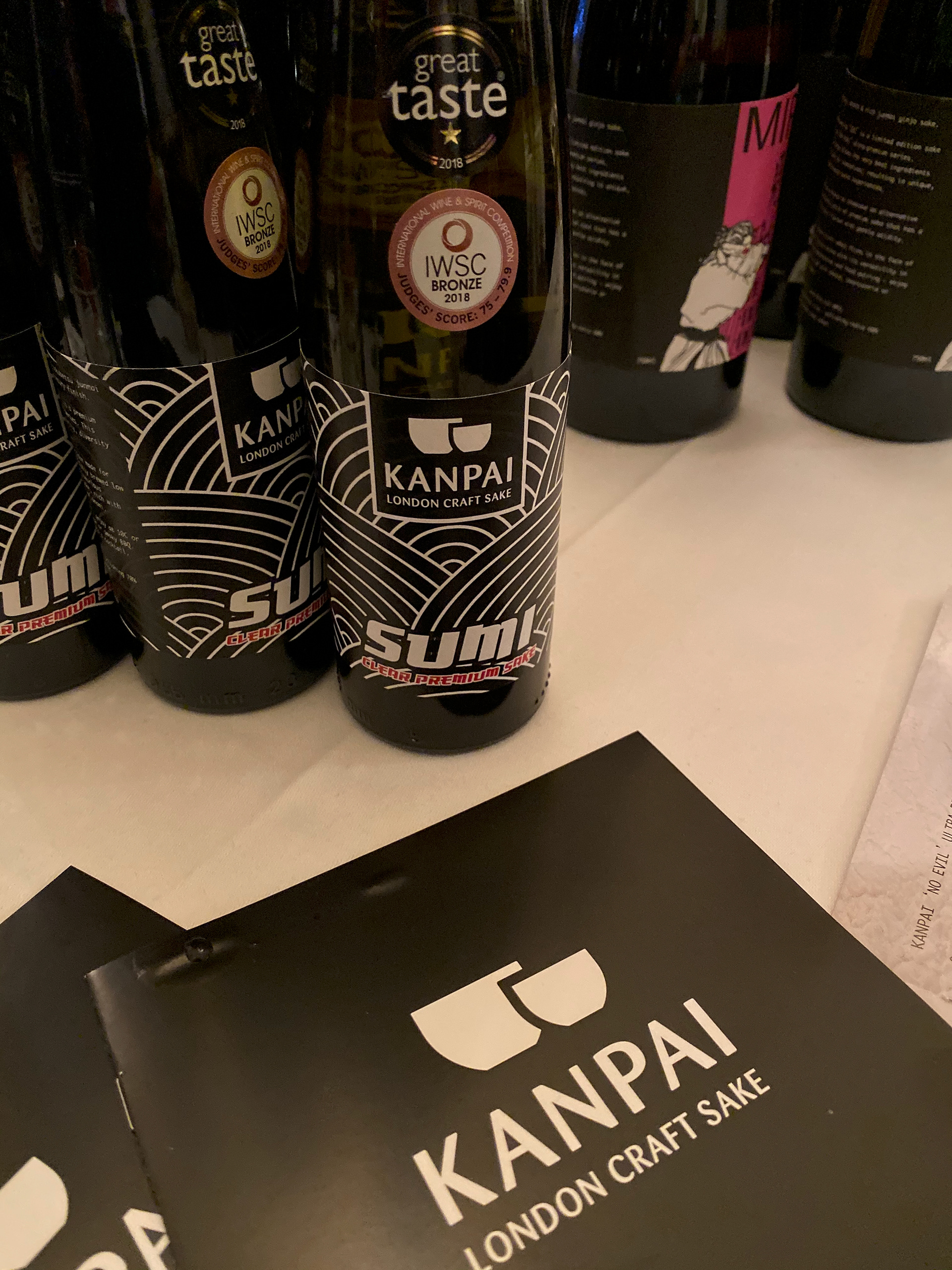
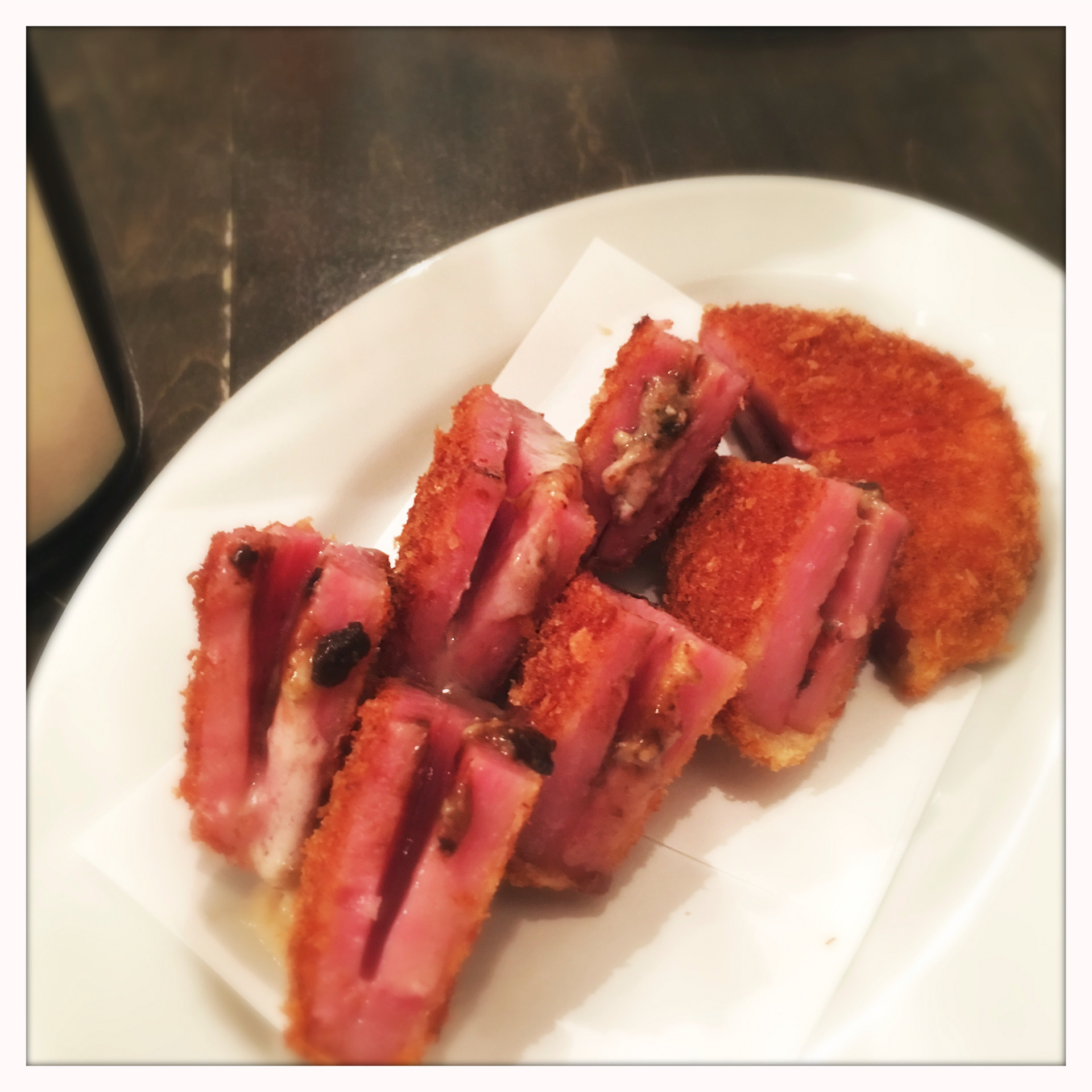

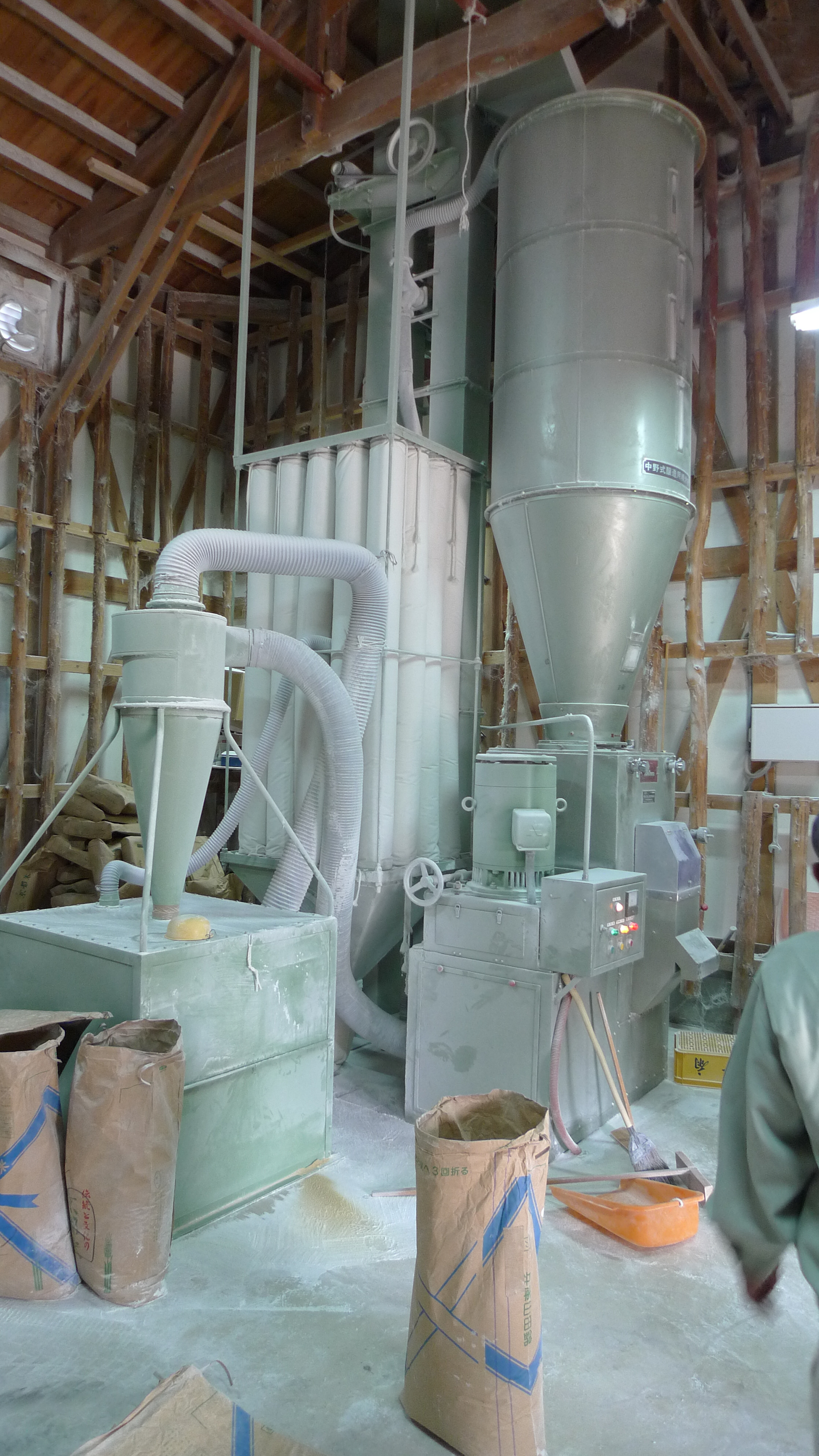

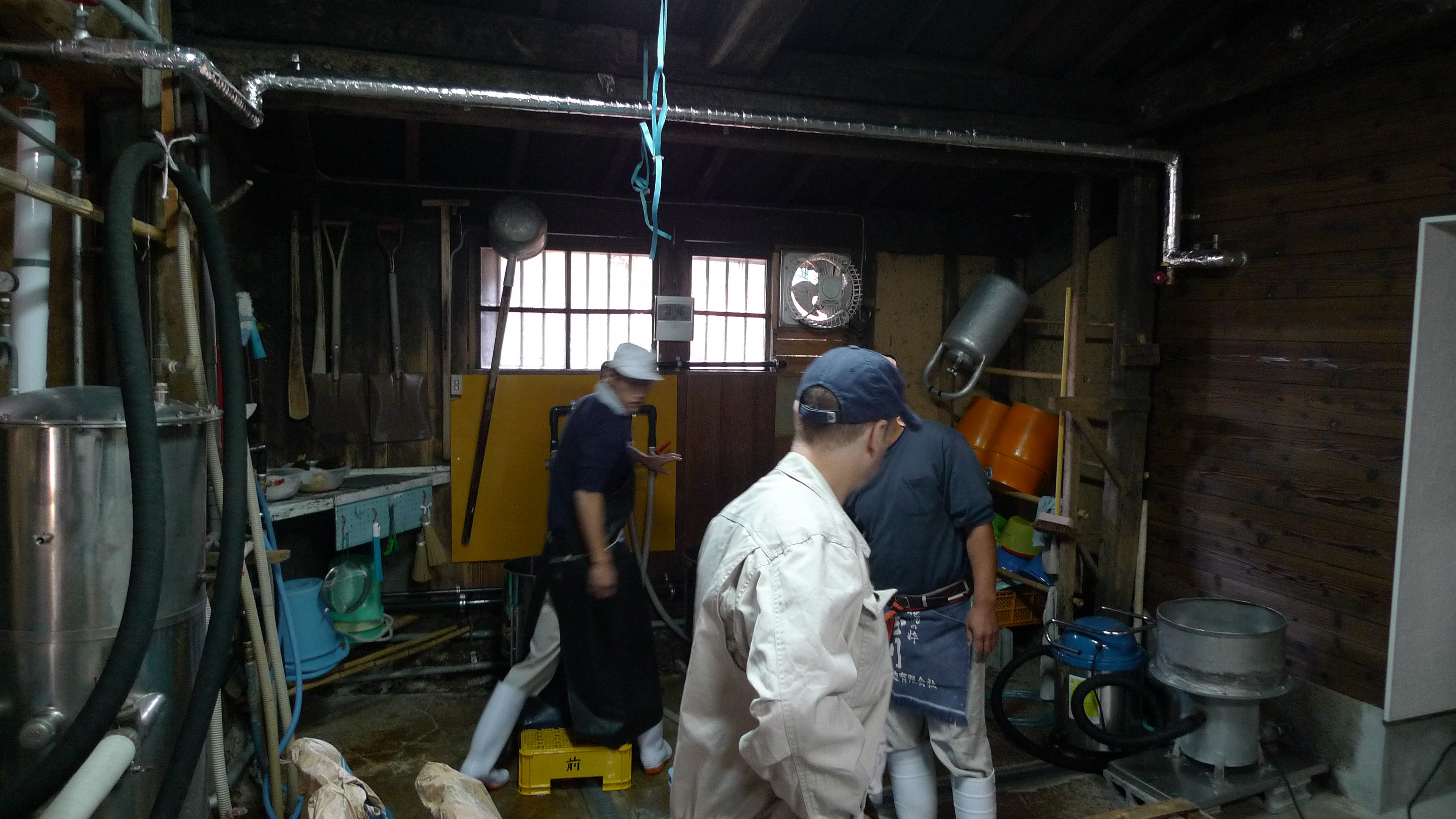


It has been said I like a drink! And later into the evening I’m not so fussy as to what it is.
I think that applies to my younger self, age it seems slows you down, that is good in some respects but not all.
Spending a little more on wine and drinking less of it is a good thing.
I started to divert my interest towards Sake around about the time I started to travel to Japan some 25 years ago.
Food and drink always seem to taste better while away on holiday, you have to always factor in the moment and place.
Sake at that time in the uk was not really available in the way it is now; it was mostly industrially made with added brewers’ alcohol and nearly always served warmed.
Not really something you would seek out to drink.
But once in Japan the genie so to speak is out of the bottle. Such a broad spectrum of sake or Nihonshu. Mostly served cold, but also available at many temperatures, making for an interesting spectrum of tastes from one bottle.
In recent years there has been a changing of the guard the old brewers have be retiring, passing the baton onto the younger generation some who have worked abroad in the wine industry or as sommelier’s for sake around the world. They like Japanese chefs have returned home with new ideas and inroads into foreign markets.
This has sparked a global response for sake and renewed interest in Japan. Sake drinking has been on the decline and breweries have been closing. Sometimes they had a small market share or were not competitive,
Or even after hundreds of years and generations of `Toji from the same family the heir did not show interest in carrying on the tradition, or simply it was the end of the hereditary line.
The sake of Modern japan has changed and many innovations are taking place in the industry the introduction of different yeasts not associated with sake, aging the sake in barrels from whisky or wine extreme rice polishing, reverting to old styles using brown rice or doburoku almost like live rice pudding. Things are getting exciting with new tastes wild acidities, and mouthfeel.
Sake is not like wine it does not rely on the type of grape to produce its flavour its not totally tied to terroir, although a few breweries are trying this and being focused on local rice and water and air bound yeasts.
It's a complex process and you would not enter into the trade blindly without being prepared to work hard with long and uncompromising hours away from your family.
Philip Harper of Tamagowa sake in Kyoto prefecture is an Englishman originally from Cornwall.
After university he travelled to Japan to teach English as many do.
He discovered the joys of sake in his time off and he was lost to the cause. Unlike others he took it to extremes by working in a brewery in Osaka and ended up becoming a Toji .
Finally landing at Tamagowa, and winning the gold medal in Tokyo in a blind tasting for his sake, a true achievement the English hand making the Japanese taste.
The promotion of sake within Japan is led by truly passionate people.
Currently they are on a charge Rebekah Wilson Lye a great advocate of sake.
A sake samurai and also a sake sister along with Marie Chiba and Miho Fujita in a soon to be released film.
Rebekah who works for Hidetoshi Nakata a famous football star now immersed in the sake world and its promotion overseas, is always travelling and promoting the beverage in its many forms.
Marie Chiba runs Gem by Moto in Ebisu in Tokyo a quite extraordinary sake bar
, where she presides over the sake list and has a wonderful connection with many breweries, getting unprecedented access to one off brews only for Gem.
Her storage of sake is a particular focus, critical temperature control is key.
It does not stop there she makes slight alterations to the brews , like blending different sake aged and not aged adding whipped beer to the top and cracked pepper, all these thing open your eyes the difference, and possibilities with sake not available with other drinks.
The food served complements so well izakaya style but always with a twist. On the last visit shirako tacos (cod milt) the house potato salad but so good and Gem classic, ham katsu spam type ham made into a sandwich filled with cheese crumbed with panko and deep fried.
Comfort food but just on point with what you are drinking.
Miho Fujita, of Mioya Shuzo in Ishikawa Prefecture,
was not expecting her change of profession she was already working in Tokyo with a successful career in advertising, when a family member died leaving no successor to the brewery, she stepped in with a resolve to carry on. Now working with her father she continues to promote and expand the business, at brewing time she is hands on in the process.
Not a sister but a great advocate of sake, is located further afield in Ishikawa prefecture in Yamanaka Onsen Yusuke Shimoki of Engawa sake bar Is a young and dapper and a true lover of sake his selection contains the hard and impossible to find promoting the sake of Ishikawa. On a recent visit to the 5-seat counter where he presides alone we enjoyed local brews served in remarkable cups and glassware with matching home-made food, Yusuke san is a fountain of knowledge.
He supports the smaller breweries by buying most of their production. The chance to return and soak in the waters of Yamanaka Onsen
and bathe in the hospitality and sake of Engawa is prime in my mind.
The new wave of brewers somehow labelled punk brewers are not constrained by history, and are stepping out of the shadows of the previous generations.
Its more than a frisson of change, its revolution.
Sake has had to travel to get overseas sometimes to the physical detriment of the sake, but also scaling the cost to make it a high-end product.
Trying to break into markets and then at a premium price does not create a wave of sales.
So, Sake brewers new to the trade have started to build new kura small and perfectly formed around the world.
London has one called Kampai they have already attracted awards for their sake and after a second round of crowdfunding have built a larger kura with more production facilities and a visitor centre, and are going from strength to strength.
click here
Wakaze Sake have a microbrewery in Sangenjaya in Tokyo and produce 30 different sakes there. They have now opened a small brewery in Paris with the intention of expanding the sake experience throughout Europe, they have new ideas and methods and primarily intend to focus on sake aged in wine barrels and rice from the Camargue they are currently crowdfunding.
There is also a big Japanese player in sake now with a brewery in Cambridge, Dojima who are currently brewing, they will also open their visitor access program in the spring of 2020.
Along with sake courses for those interested in the process.
Dojima seem somewhat focussed on exclusivity and their sakes only appear to be available through a member program.
If the temptation to try sake overwhelms you, a good place to start is Tengu Sake based in London and run by sake educator Oliver Hilton-Johnson a great selection of sake imported and selected by him. He is also very much involved with the British sake association as director and is SSI accredited sake educator.
Its only rice? Its feeds a nation religiously, culturally, gastronomically.
It is offered to the gods it plays an important part in everyday life its eaten by everyone.
Sake is made from all those elements they are in your glass drink it in…
The god of one hundred medicines.